Manufacturer: Asus
UK price (as reviewed): £899.99 (inc. VAT)
US price (as reviewed): $869.99 (exc. tax)
The Asus ROG Strix range of GPUs has historically been one of the very best. Asus’ no-holds-barred approach usually has clear benefits in terms of performance, component and build quality, and features, but it invariably results in the cards being among the most expensive air-cooled variants of a GPU. We’ve long seen this as problematic on low-end and mid-range GPUs where the added cost of such niceties becomes considerably harder to justify; if your card is similar to the price of the next GPU up the stack, it’s almost doomed from the start.
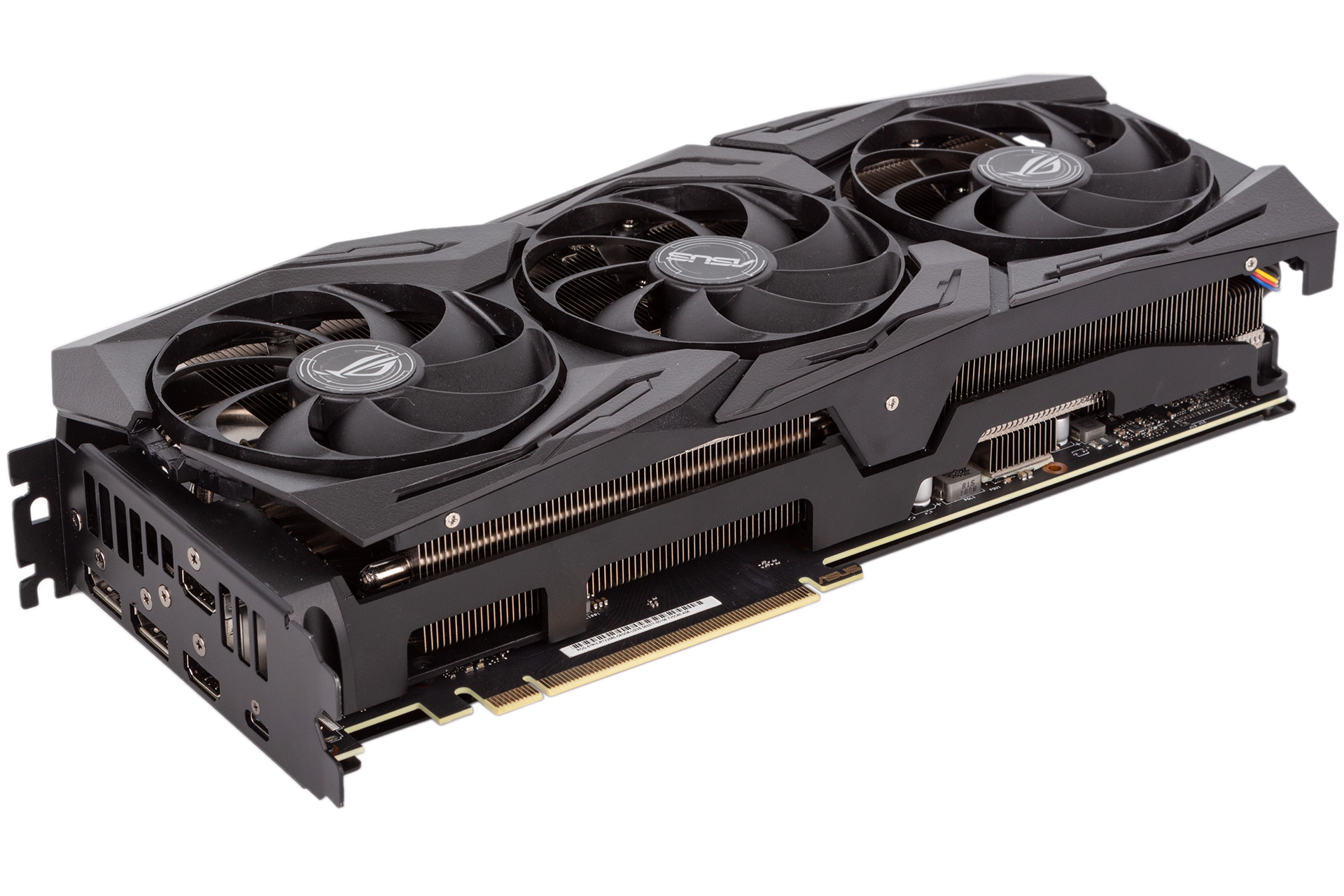
The RTX 2080, though, is far from a mid-range GPU. Second only to RTX 2080 Ti in the GeForce stack and starting at around £650, it’s undeniably a high-end proposition. Placing even more demand on your wallet, though, is the £900 Asus ROG Strix OC version. Following the pattern outlined above, this is again the most expensive air-cooled variant of this specific GPU. Thankfully, it is at least still a good £100 or so away from the starting price of RTX 2080 Ti cards, but it’s still going to have to do a lot to be considered worthy.
The RTX 2080 ROG Strix OC is both very large and very heavy. At 300mm long and 131mm tall, even some mid-towers may struggle to house it. The latest cooler design is described as 2.7-slot, and the card does indeed occupy almost three full expansion slots.
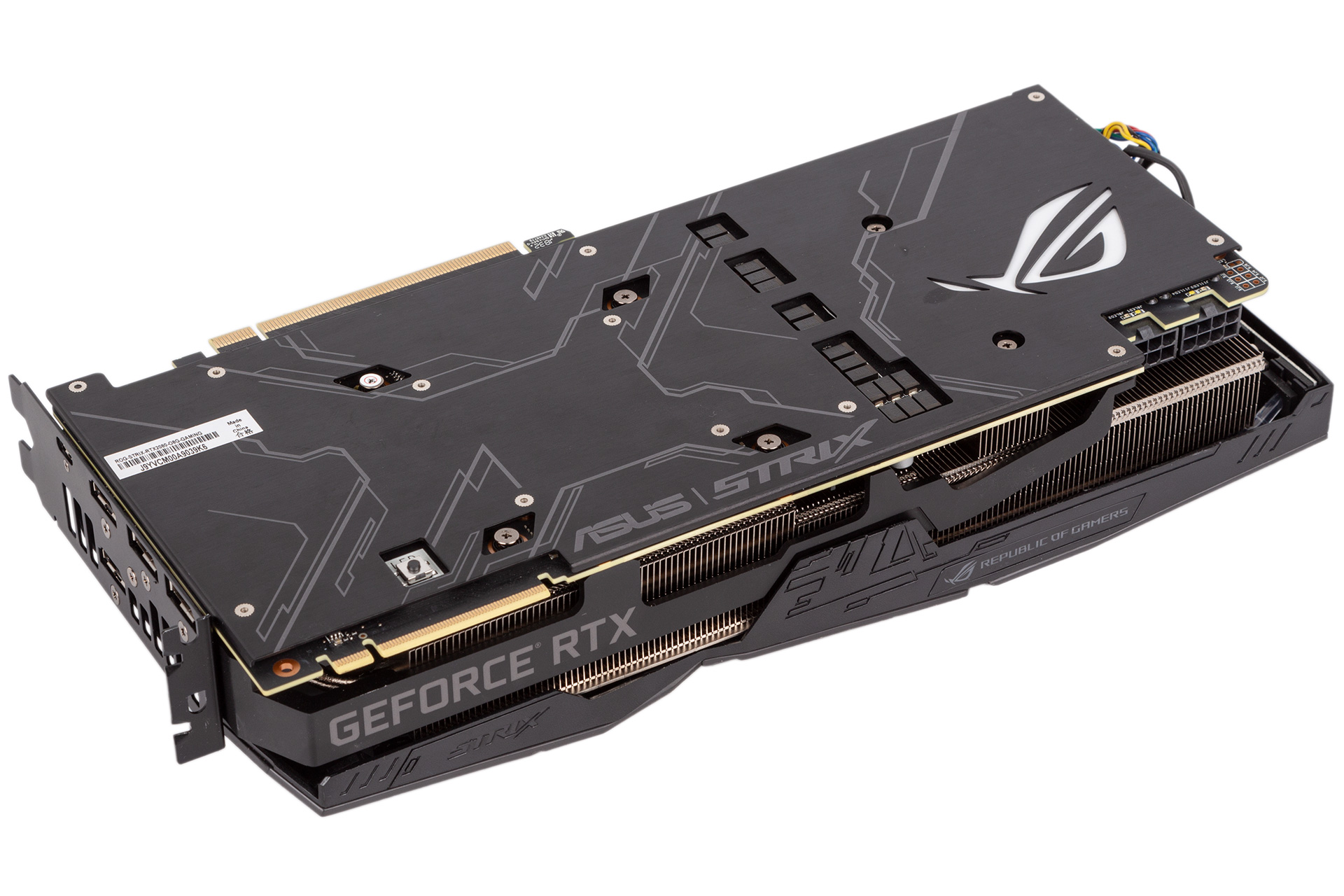
Build quality is mostly exceptional. The metal backplate offers full coverage and strengthens the card considerably, and an internal metal contact plate adds even more rigidity and helps prevent sagging – useful, since no support accessory is supplied. One small gripe is that there are multi-coloured cables exposed near the end of the card; these could do with being sleeved properly, as these details do matter when forking out £900. It would also be nice to have a proper cover for the NVLink connector i.e. one that blends in neatly with the backplate when attached.
There are two RGB strips above and below each fan for a total of 12, and there’s also RGB integrated along the top edge (ROG logo) and more importantly on the backplate, so whether you vertically mount or not you should still get a nice light show, all customisable via Asus Aura. Users will want to take note that this software was subject to serious security concerns, but Asus claims to have addressed them in the latest version. Alternatively, a hardware toggle for the lighting is available on the backplate if you decide to switch it all off at once.
It's fair to expect a heavy overclock with such an investment. Asus is running this card with a boost clock of 1,860MHz out of the box (which is how we test), but you can use its GPU Tweak II software to toggle OC Mode, which increases the power limit to 110 percent and the boost clock to 1,890MHz. These are 150MHz (nine percent) or 180MHz (10.5 percent) offsets compared to stock boost frequency, which is decent. However, the OC Mode thing is a bit silly we think, as these modes tend to make little difference; why not just run the card at 1,890MHz out of the box? As it stands, 1,860MHz isn’t the fastest on the market and is in fact found on £750 cards like the EVGA FTW3 Ultra Gaming model. Of course, cooler quality and power limits will affect the actual in-game boost speed, but it’s a shame Asus couldn’t have the most expensive RTX 2080 also be the fastest on paper. Similarly, there’s no memory overclock, but that seems to have become a thing of the past with the latest Nvidia cards.
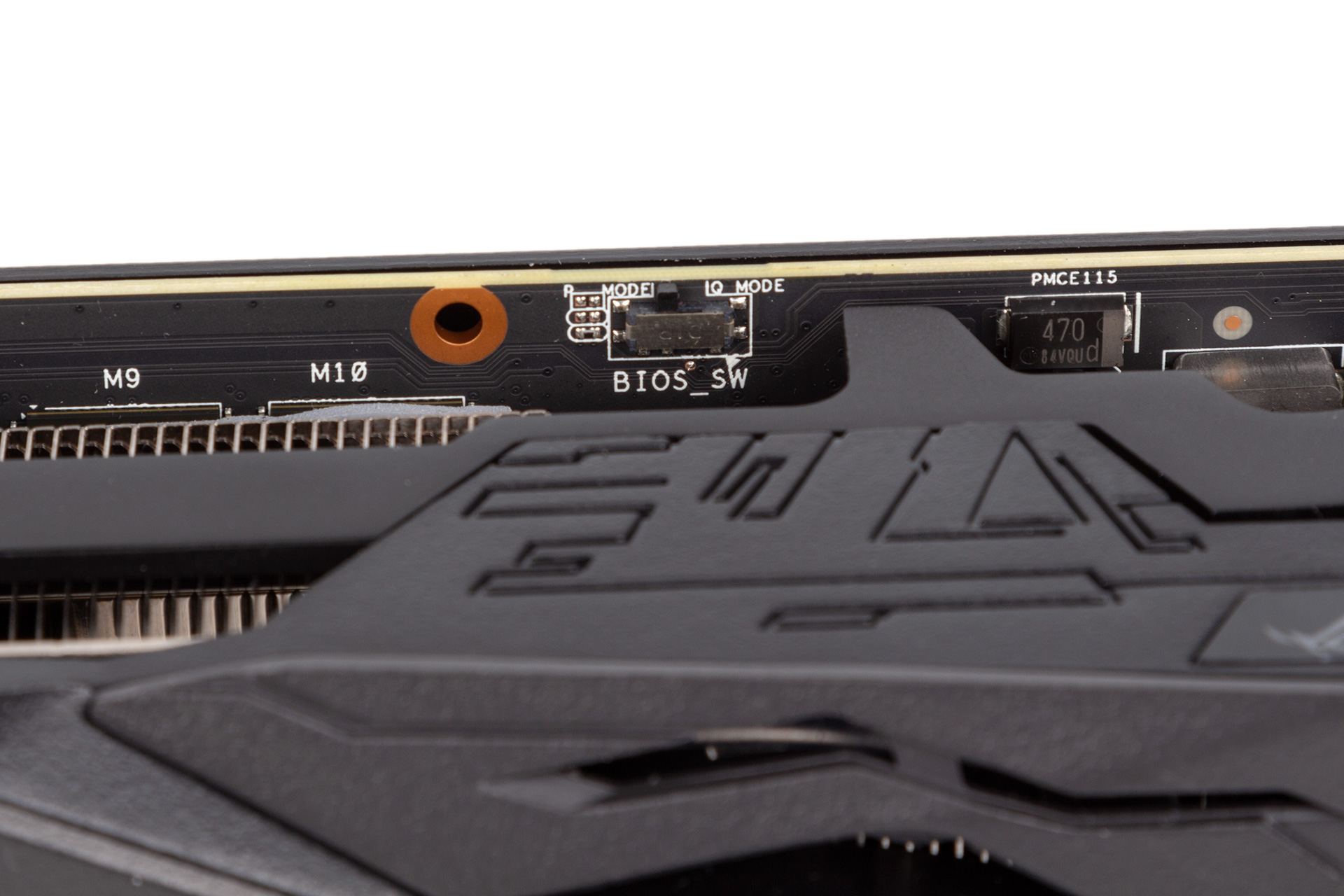
As well as the software-based OC Mode, Asus implements a dual-BIOS switch allowing users to toggle P Mode (Performance) or Q Mode (Quiet). The difference is in the fan curve, which is more aggressive in P Mode and quieter in Q Mode. There is some appeal to this, but the decision to have always-on fans in P Mode seems artificial; we’d rather the semi-passive feature be always active regardless of how the fans behave under load.

Dual eight-pin PCIe plugs ensure power delivery is specced up to 375W in total, which will easily be enough for the GPU plus any overclocks. The plugs are indented, which is always good on such tall cards, as it means the plugs have proper room to connect.

A pair of DisplayPort headers is joined by a pair of HDMI 2.0 ports, which is good news for those who own both a VR headset and HDMI display and shouldn’t negatively impact others. A USB Type-C VirtualLink connector is also supplied; we’ve zero complaints about this setup.
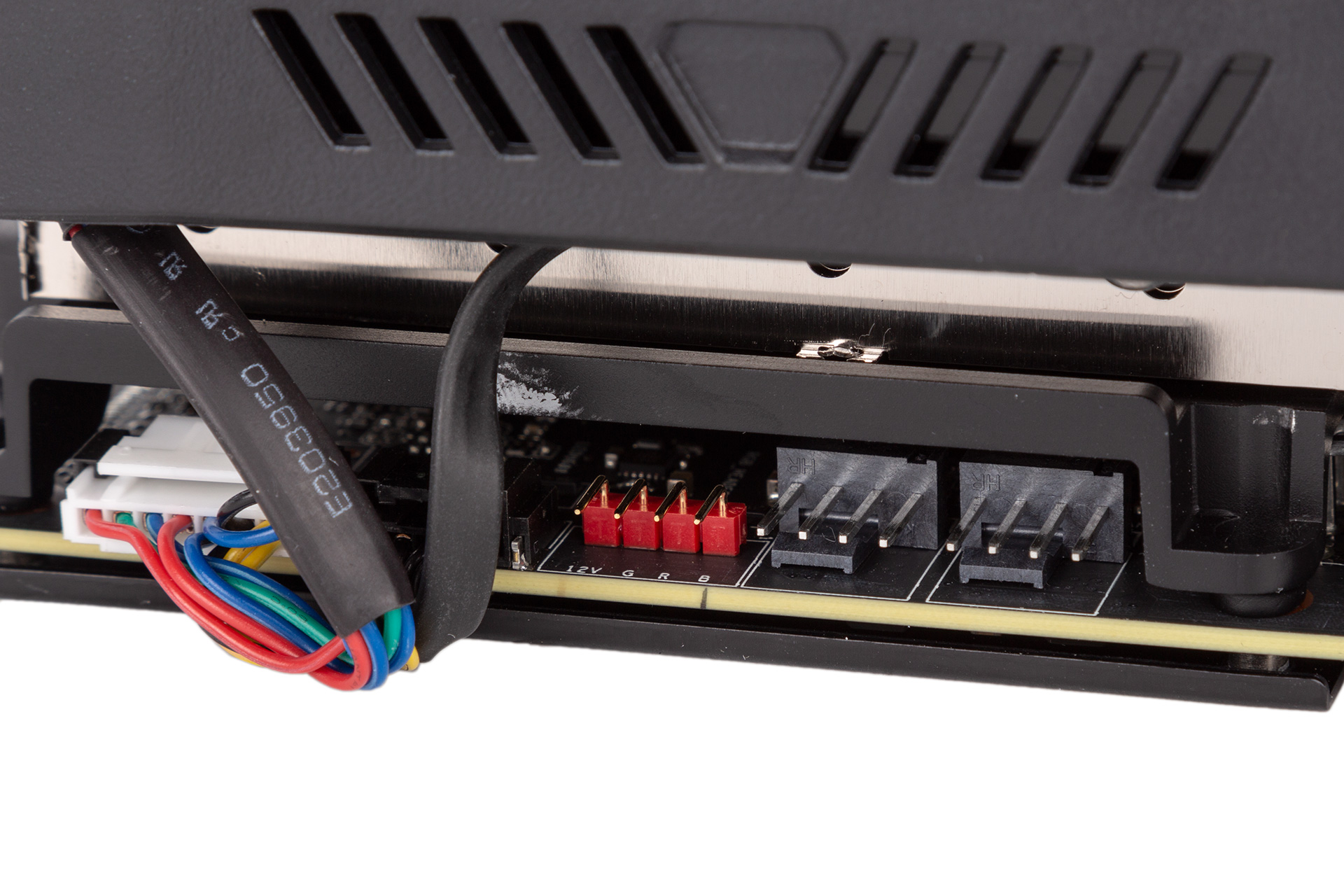
At the end of the PCB are three extra headers, one four-pin RGB and two four-pin fan headers. The former can be used to add additional RGB lighting to your build – controlled with Aura Sync of course – and the latter can be used with PWM fans to regulate their airflow based on GPU temperature, which could be particularly useful for front and bottom intake fans.
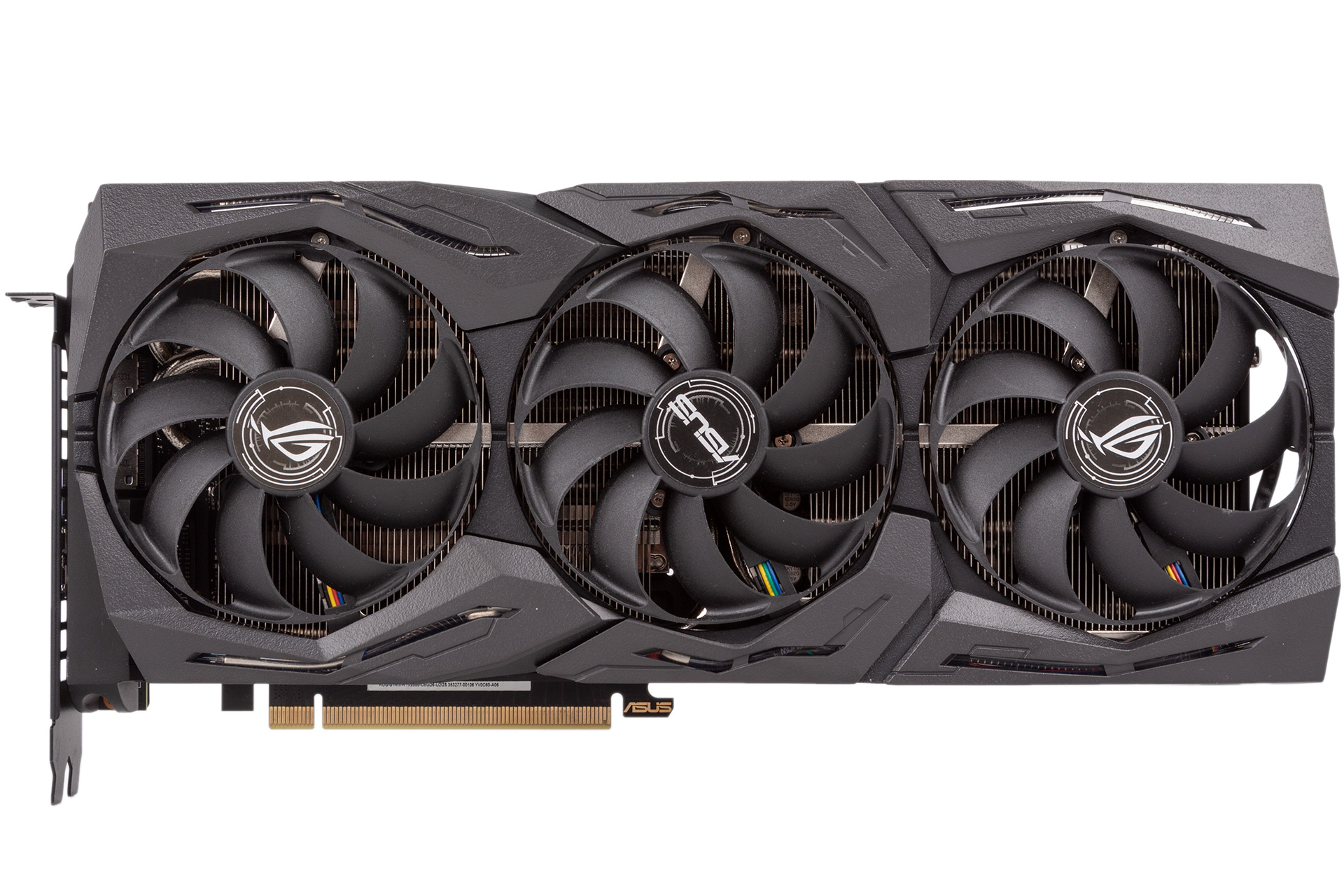
The three fans are Asus’ very latest GPU models known as Axial-tech. Compared to previous gen designs, fan blades are longer and there’s an external ring said to increase both structural integrity and downward air pressure. They also have IP5X dust protection. As discussed they operate semi-passively in Q Mode, and they will turn off when the GPU temperature is 55°C or lower.

The heatsink design has also been refreshed, and the main change is that it’s gotten even bigger, with Asus claiming over 20 percent additional surface area as a result. It uses six copper heat pipes fed by a copper contact plate with MaxContact technology that’s said to provide better contact with the GPU via precision machining. All the copper is nickel-plated, another nice touch. There’s also an extra VRM contact plate plus thermal pads to directly cool the MOSFETs, but the chokes and capacitors are left exposed. The GDDR6 memory modules, meanwhile, are cooled by a separate metal contact plate that doubles up as a reinforcement frame. Asus has really gone to town on maximising how much volume the cooler occupies, leaving very little space wasted, which is great to see.
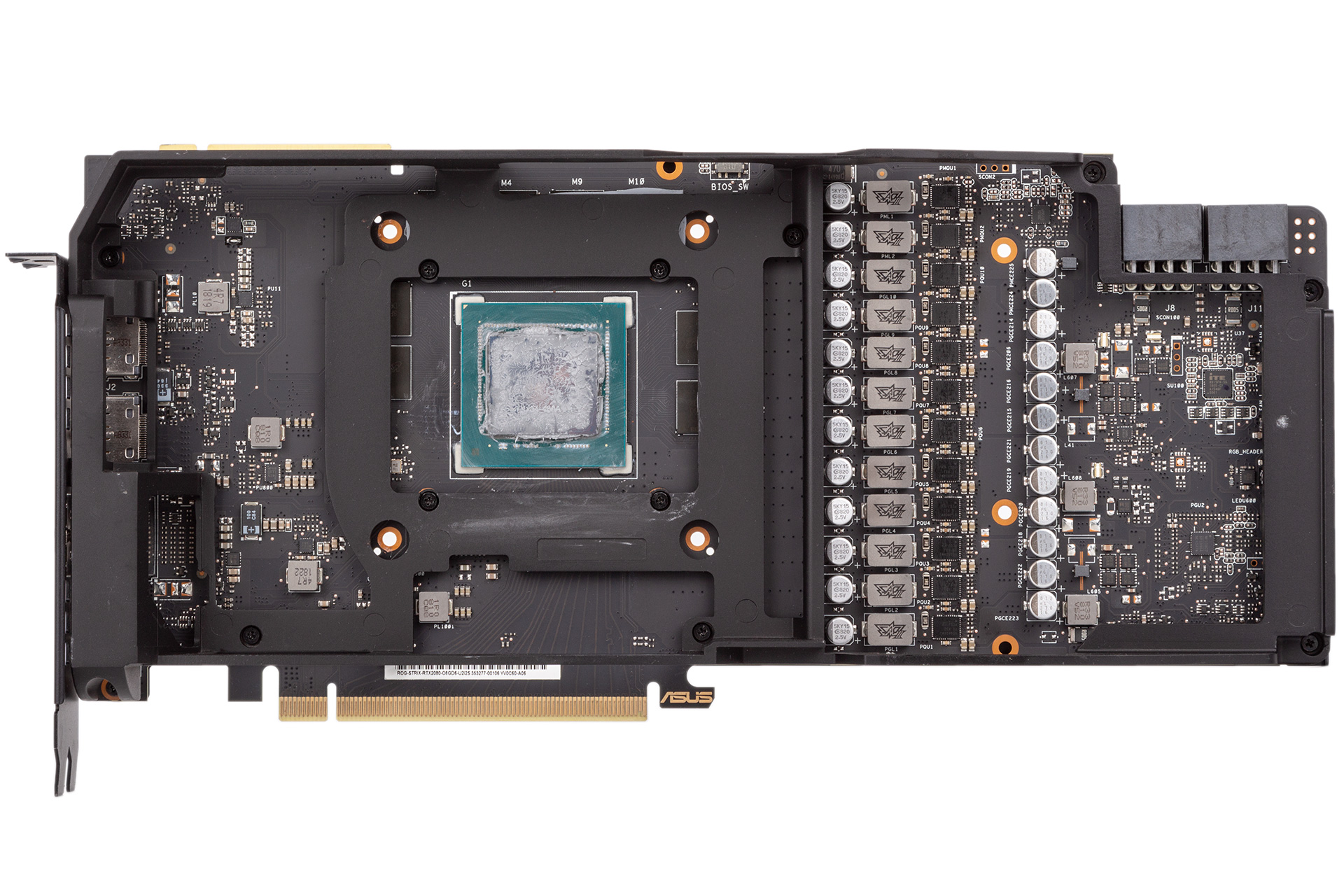
The cooler is easily disassembled – an important consideration for anyone with water-cooling on the mind. The PCB is neat and very clean, most likely as a result of Asus’ Auto-Extreme automated manufacturing process, highlights of which include soldering being done in a single pass and a flux-free process. Asus also deploys the full suite of Super Alloy Power II components for the VRMs on the 10+2 phases. Lastly, there are six voltage check points in the corner next to the power plugs.
A three-year warranty gives Asus another advantage over those that only offer the default of two.
Specifications
- Graphics processor Nvidia GeForce RTX 2080, 1,515MHz (1,860MHz boost or 1,890MHz in OC Mode)
- Pipeline 2,944 stream processors, 368 Tensor Cores, 46 RT Cores, 184 texture units, 64 ROPs
- Memory 8GB GDDR6, 14Gbps effective
- Bandwidth 448GB/sec, 256-bit interface
- Compatibility DirectX 12, Vulcan, OpenGL 4.5
- Outputs 2 x DisplayPort 1.4, 2 x HDMI 2.0b, 1 x USB-C VirtualLink
- Power connections 2 x eight-pin PCIe, top-mounted
- Size 300mm long, 131mm tall, 54.1mm deep (~2.7-slot)
- Warranty Three years

MSI MPG Velox 100R Chassis Review
October 14 2021 | 15:04

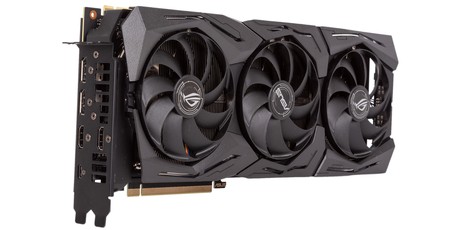

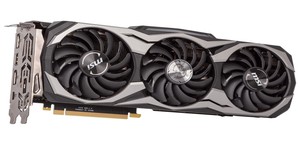
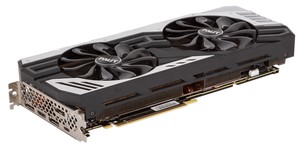




Want to comment? Please log in.